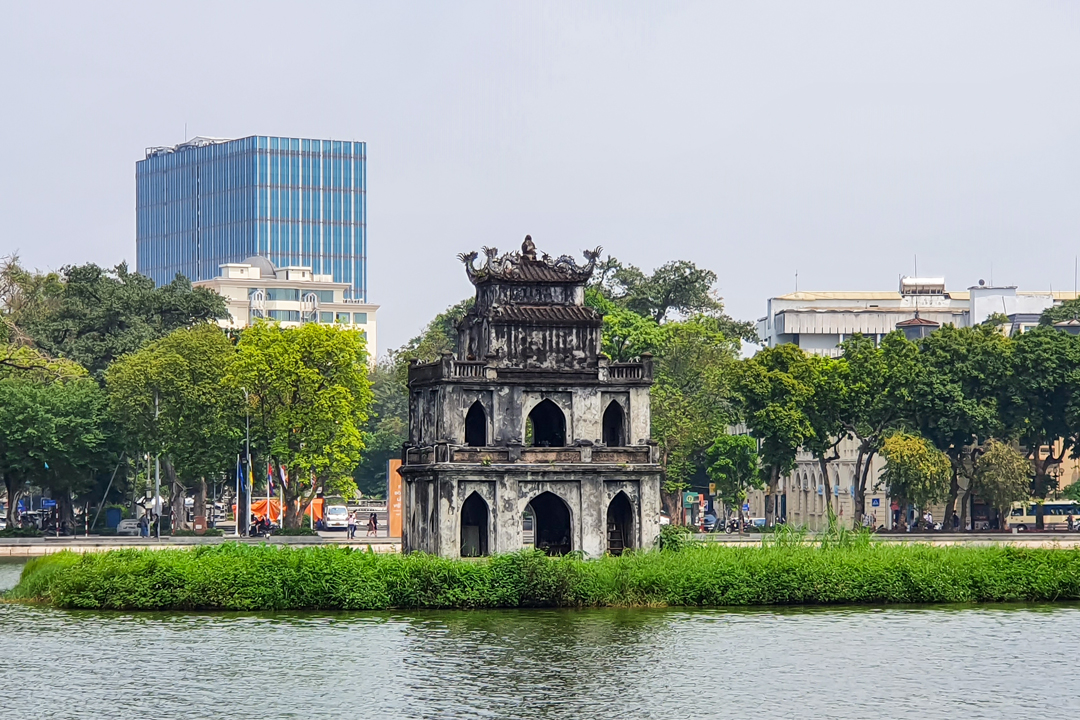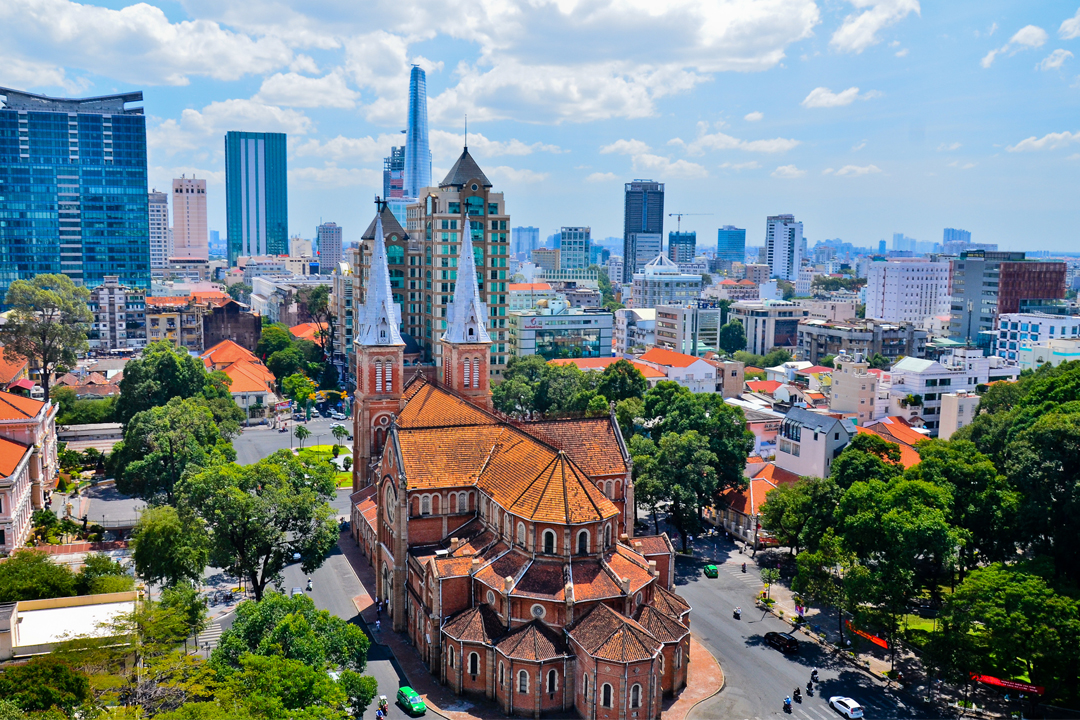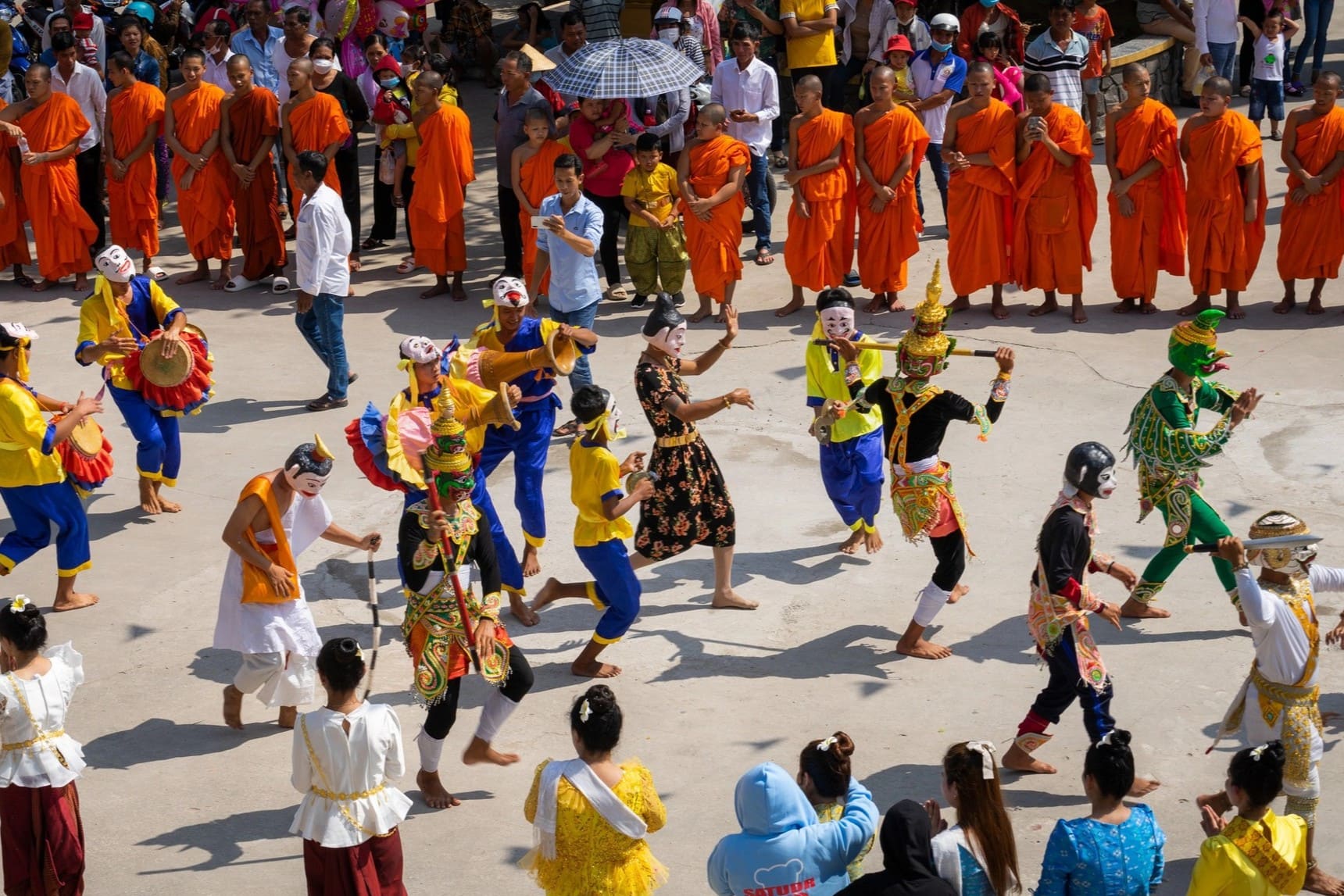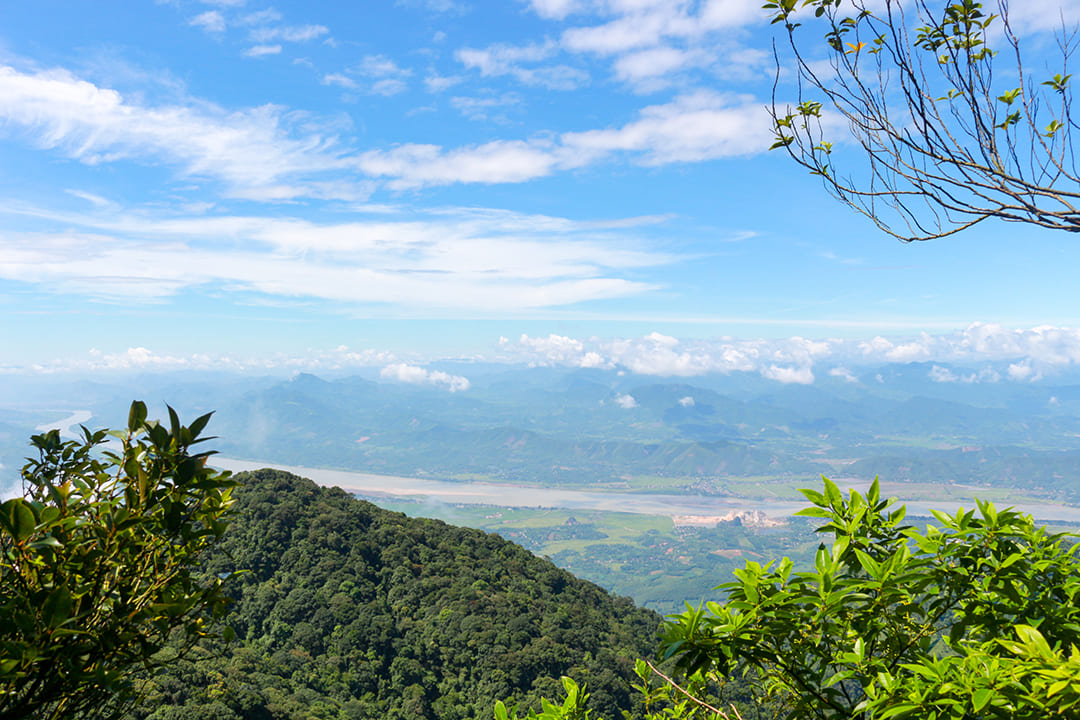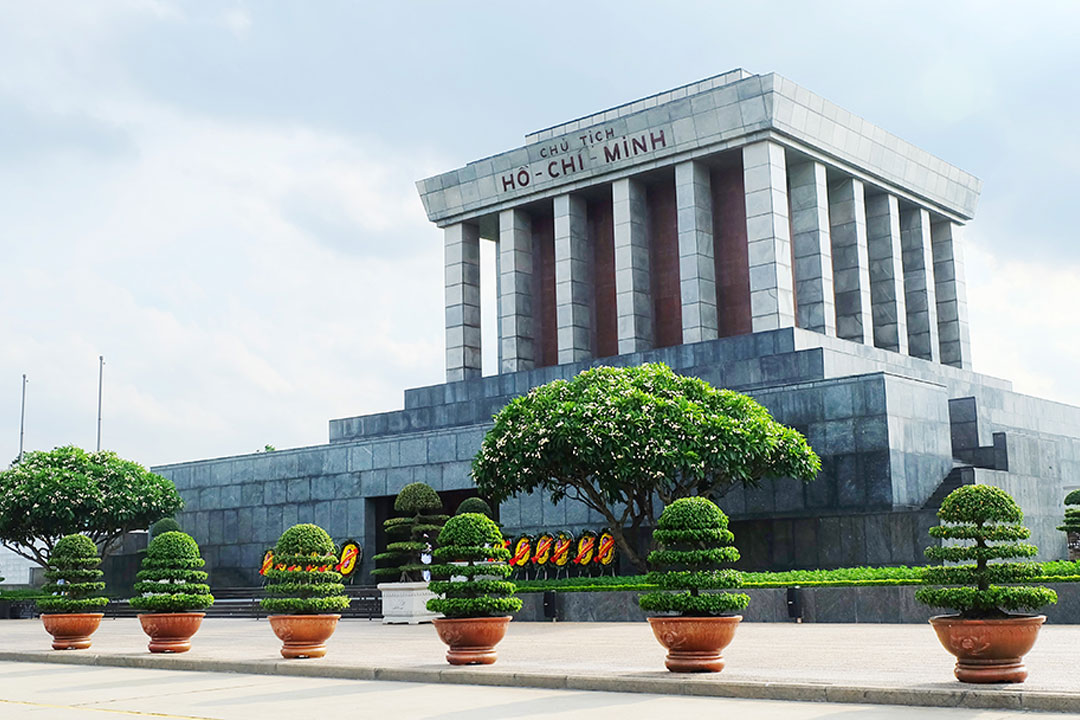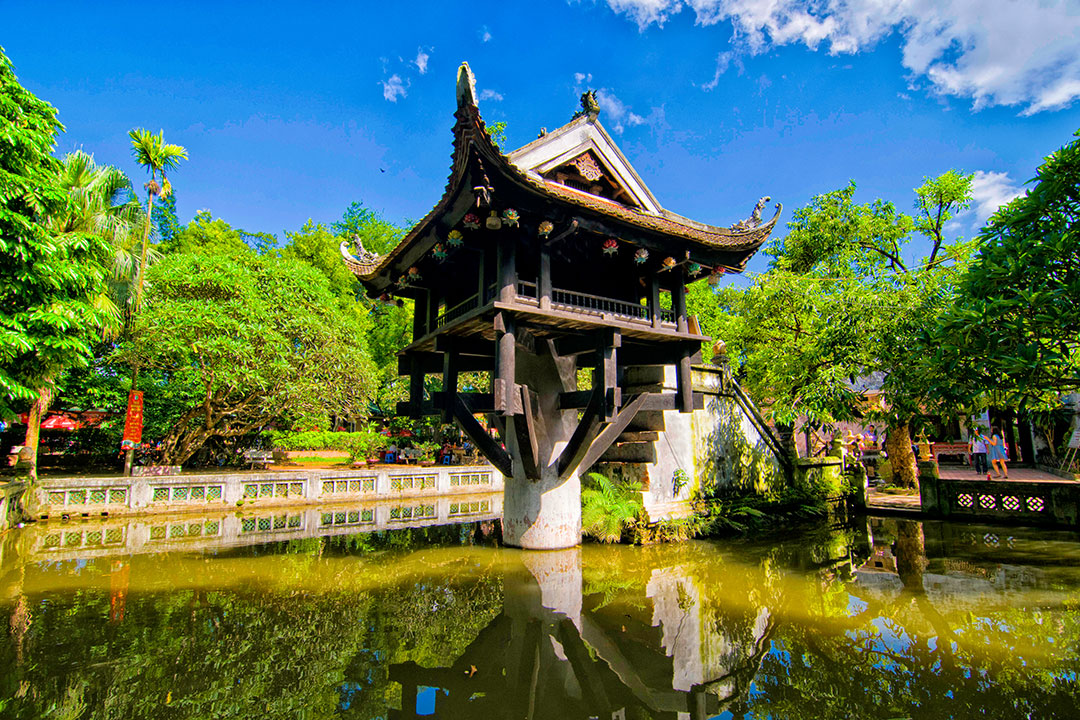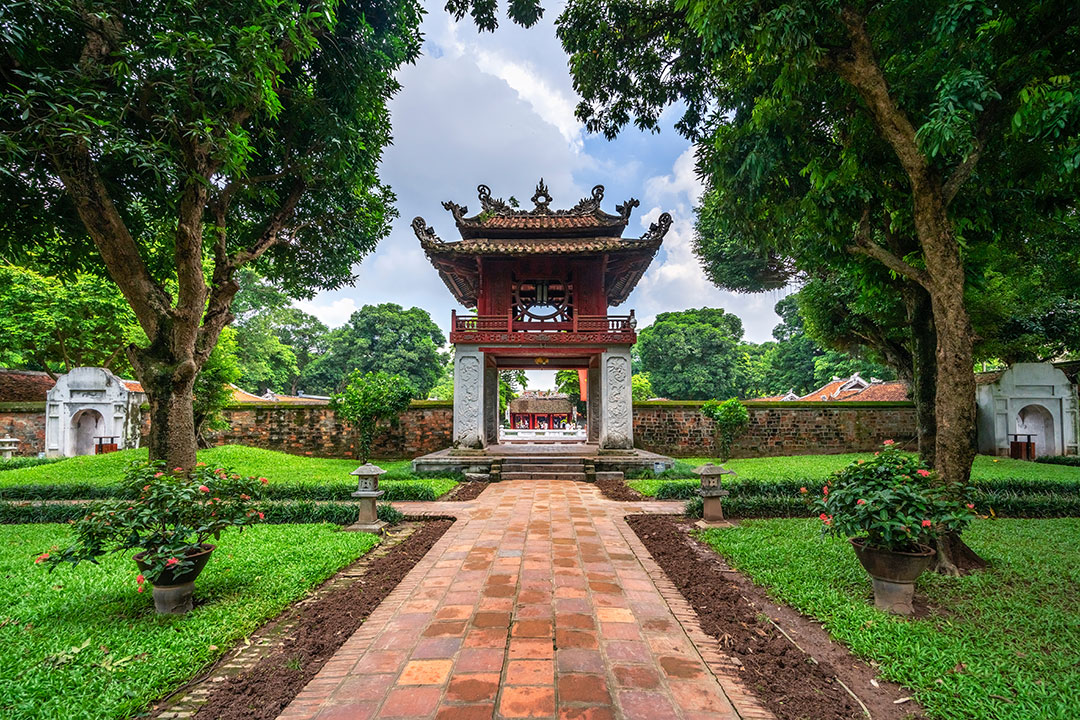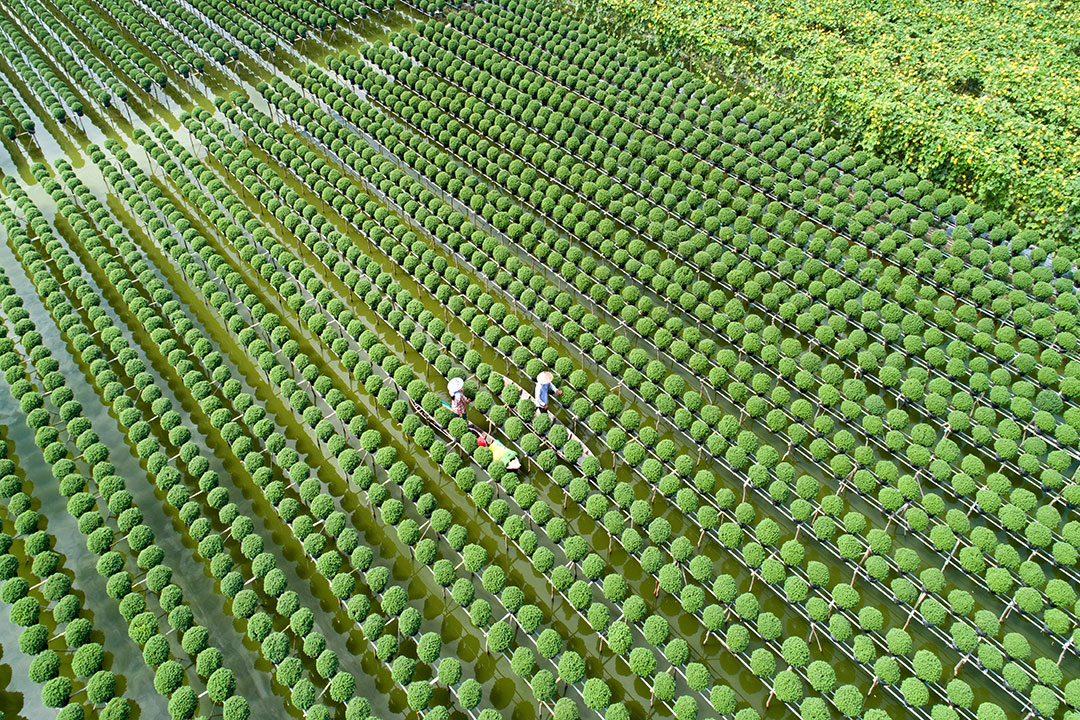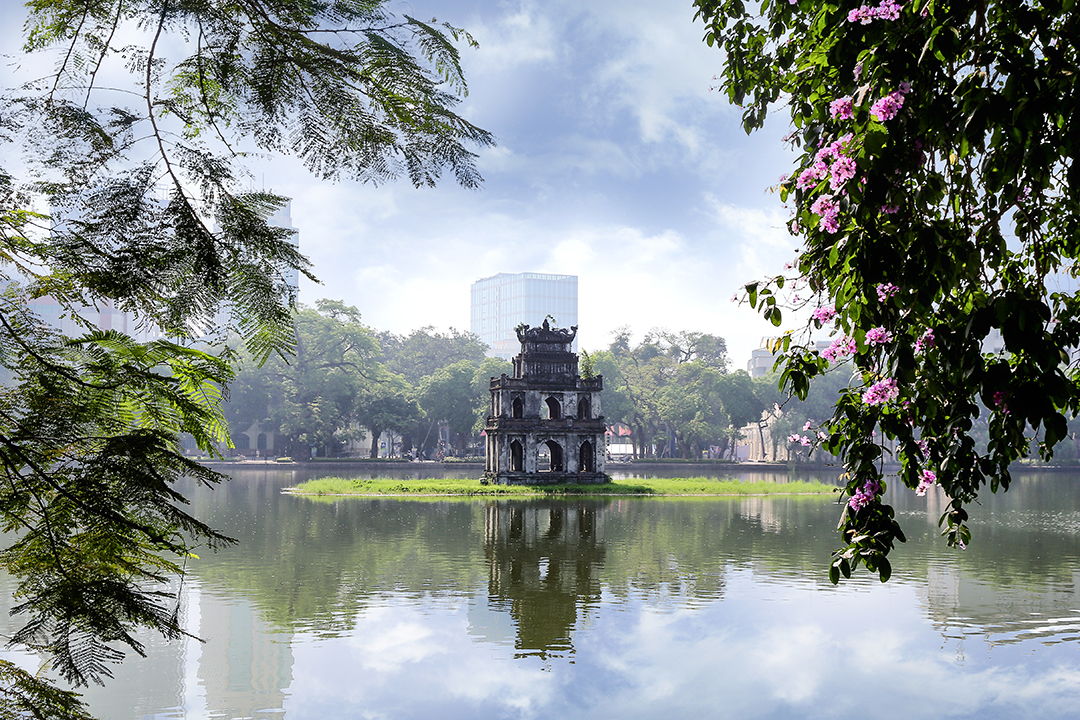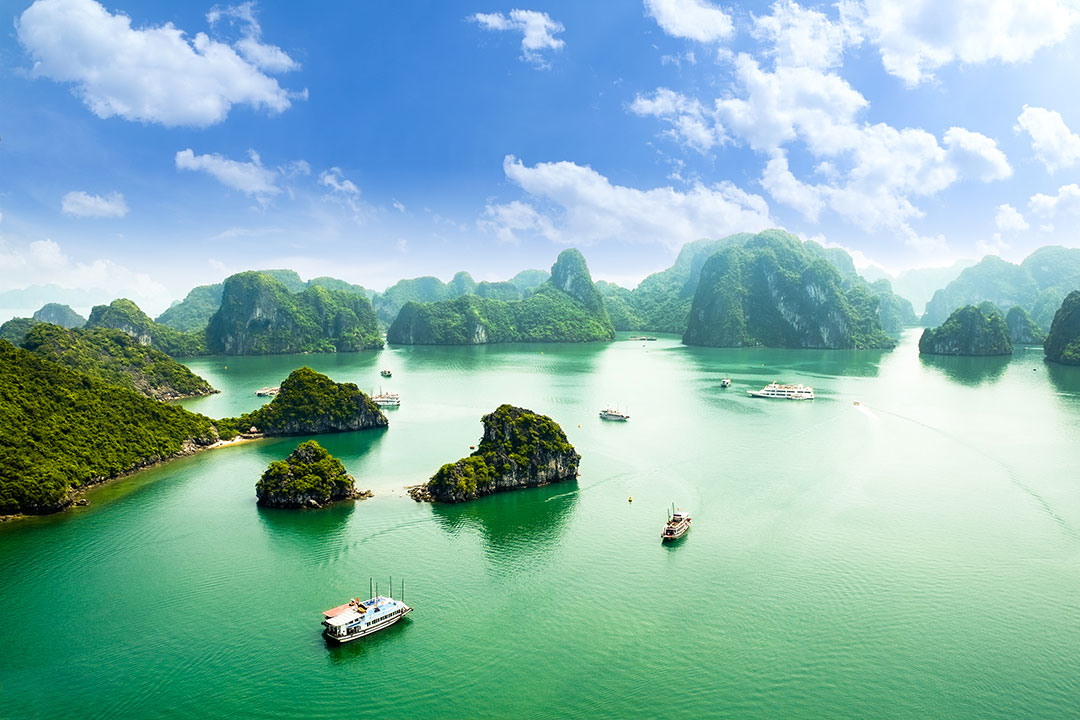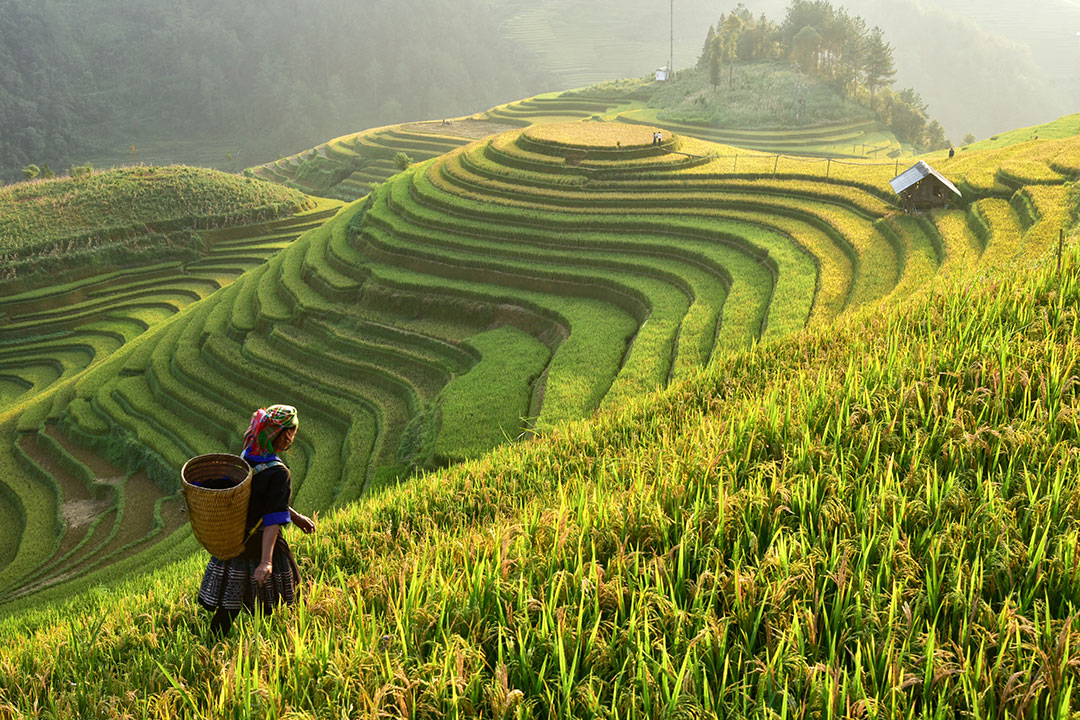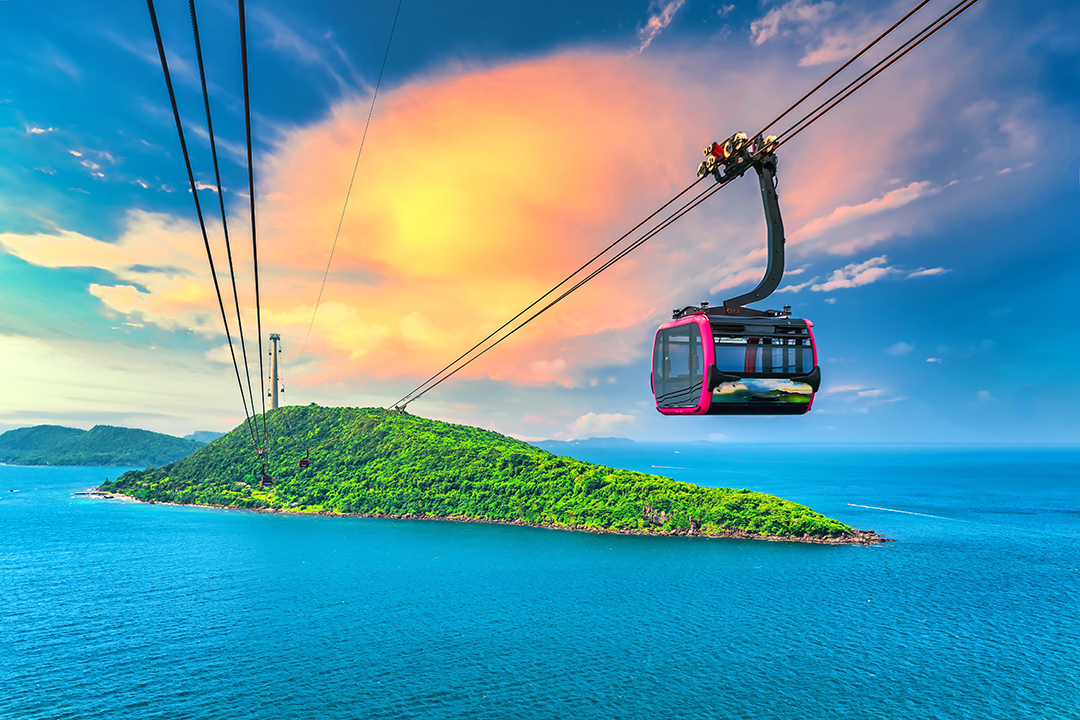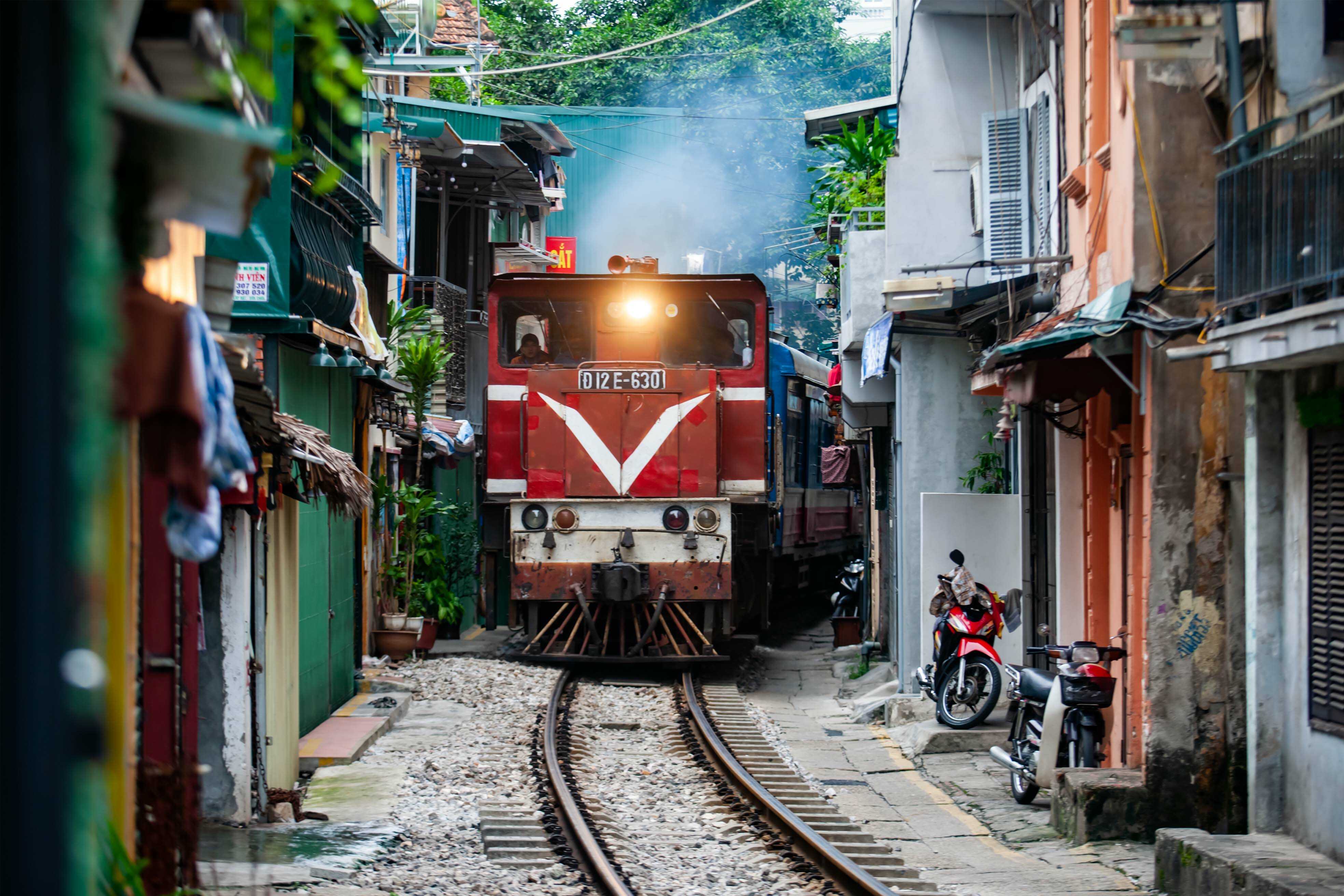Ba Vi National Park: Geography Features, History, Things To Do & Travel Guide
Tucked away in the hills west of Hanoi, Ba Vi National Park offers a refreshing escape into nature’s embrace. With its cool climate, misty mountains, and dense forests, the park invites travelers to slow down and breathe in the stillness. It’s a place where winding trails lead to sacred temples and sweeping views, and where every step reconnects you with the natural world.
What makes Ba Vi truly special is its blend of biodiversity and cultural depth. From rare plant species to roaming wildlife, from ancient pagodas to remnants of French colonial architecture, the park is a tapestry of history and ecology. As GTrip guides you through its hidden trails, time-tested temples, and wildlife spectacles, you are ensconced in serene beauty. Let’s discover why this gem has become an essential journey for those craving to break free from the ordinary.
Geographical features of Ba Vi National Park
Location: Ba Vi Commune, Hanoi (Tan Linh Commune, Ba Vi District, Hanoi); 48-60 kilometers west of Hanoi
Ba Vi National Park is a striking mountainous sanctuary that rises dramatically from the surrounding flat terrain of the Red River Delta. Covering an area of over 9,700 hectares, it offers a refreshing contrast to the lowlands of northern Vietnam, making it a popular retreat for those seeking cooler air and natural scenery. The park’s landscape is dominated by the Ba Vi mountain range, which features three notable peaks: Vua Peak at 1,296 meters, Tan Vien Peak at 1,227 meters, and Ngoc Hoa Peak at 1,131 meters. Each summit provides panoramic views and a distinct experience for hikers and sightseers alike.
Ba Vi’s unique topography is the result of ancient volcanic activity, with its last eruption dating back approximately 200 million years. This geological history has shaped a complex terrain composed of granite, weathered volcanic rock, sedimentary layers, and limestone, especially visible on the lower slopes. These formations have given rise to natural caves, dramatic rock outcrops, and numerous streams and waterfalls that flow down the forested mountainsides. The varied elevation also creates a range of slope gradients, from gentle hills near the base to rugged, challenging trails at higher altitudes.
One of the most remarkable aspects of Ba Vi is its distinct microclimate. Temperatures decrease noticeably with elevation, and the upper reaches are frequently enveloped in mist and low-hanging clouds, especially during the early morning and late afternoon. This creates a mystical ambiance that enhances the park’s allure. The eastern slopes, facing the Gulf of Tonkin, receive higher rainfall due to prevailing moist winds, fostering lush, moisture-loving plant life. These climate variations have resulted in diverse ecological zones within the park, supporting a wide range of flora and fauna and enriching the overall experience for nature lovers and researchers.
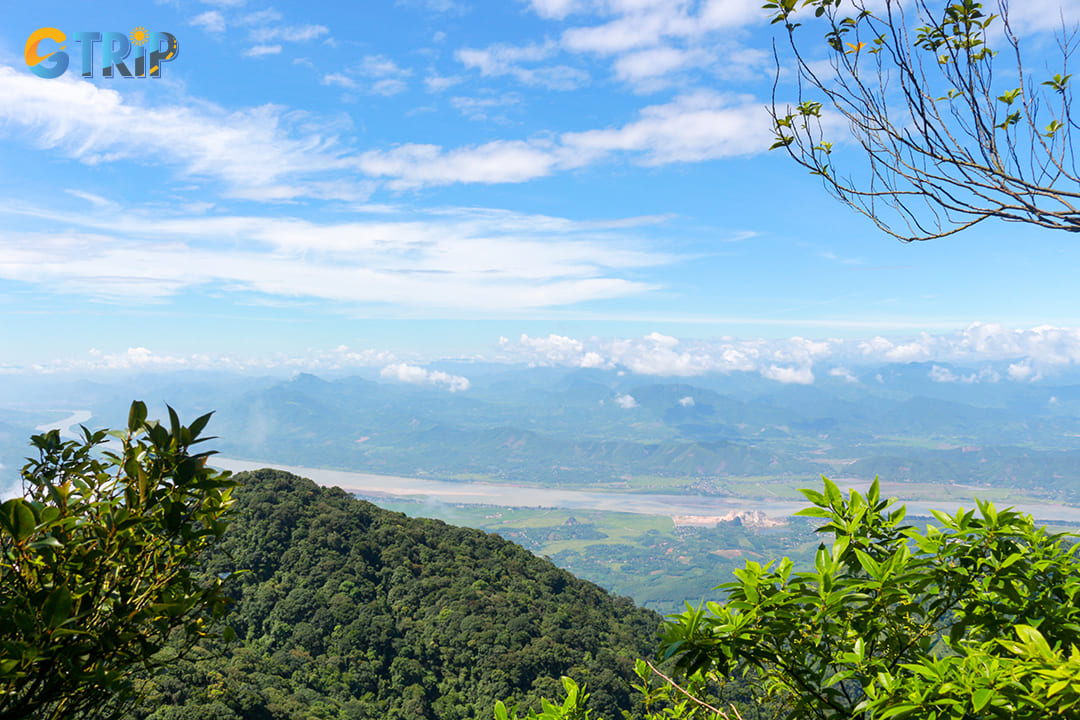
Ba Vi National Park is a striking mountainous sanctuary that rises dramatically from the surrounding flat terrain of the Red River Delta
The history of Ba Vi National Park
Ba Vi National Park reflects Vietnam’s dedication to protecting both its natural landscapes and cultural heritage. Long admired for its biodiversity and cool climate, the park has evolved from a colonial-era retreat into a vital conservation area. Its journey showcases the country’s growing awareness of environmental stewardship and sustainable development.
The area’s official status began in 1991 when the government transformed the Ba Vi National Forbidden Forest into Ba Vi National Park through Decision No. 407/CT. Initially covering around 7,300 hectares, the park was established with key goals: to preserve native ecosystems, protect endangered species, conserve cultural relics, and promote research and eco-tourism. This marked a pivotal moment in Vietnam’s conservation history during its early reform years.
In 2003, the park’s boundaries were expanded to include parts of Hoa Binh Province, increasing its area to approximately 9,700 hectares. This strategic growth recognized the ecological value of the greater Ba Vi mountain region and strengthened Vietnam’s commitment to biodiversity. Today, Ba Vi spans several communes across both Hanoi and Hoa Binh, reinforcing its regional significance.
Beyond its ecological value, Ba Vi also protects a rich cultural landscape shaped by generations of Kinh, Muong, and Dao communities. The park is home to ancient temples, shrines, and traditional villages that highlight the enduring relationship between people and nature. These cultural elements, combined with its diverse ecosystems, make Ba Vi not just a natural reserve but also a living heritage site.
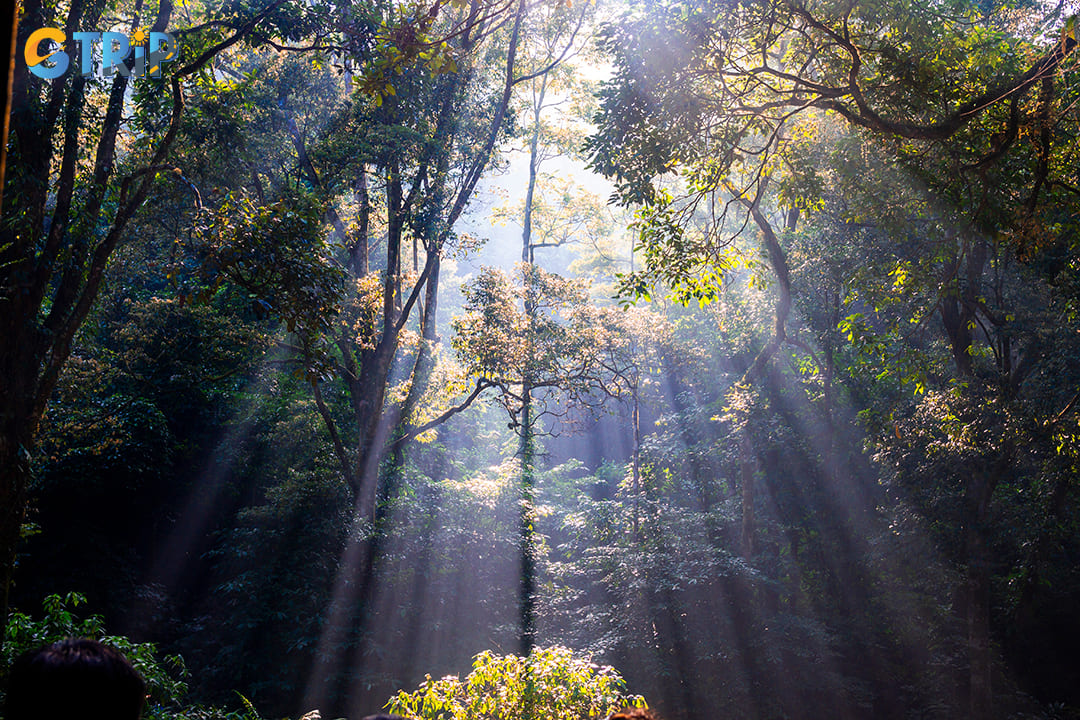
Ba Vi National Park reflects Vietnam’s dedication to protecting both its natural landscapes and cultural heritage
Natural environment of Ba Vi National Park
Ba Vi National Park stands as one of Vietnam's most ecologically significant protected areas, encompassing a rich tapestry of biodiversity across its mountainous terrain. The park's unique geographical position creates diverse microclimates that support an extraordinary range of plant and animal species. Many of them are endemic to the region or listed as endangered in Vietnam's conservation records.
Biodiversity and ecosystem
The lush landscape of Ba Vi National Park harbors an impressive 2,181 documented plant species, forming a botanical treasure trove that scientists continue to study. Many of these plants hold significant conservation value, with dozens listed in Vietnam's Red Book of endangered species. These plants range from towering ancient trees to delicate orchids, creating varied habitats that support the park's diverse fauna.
The animal kingdom within Ba Vi is equally remarkable, featuring 54 mammal species that roam through the forested slopes. Among these mammals, tourists might glimpse the elusive civet, which plays a crucial role in seed dispersal throughout the forest ecosystem. The large-antlered muntjac, a deer species native to Southeast Asia, also finds sanctuary in the park's protected boundaries, though sightings remain rare due to their shy nature.
Bird enthusiasts will be particularly drawn to Ba Vi's avian diversity, with 193 recorded species making the park a premier birdwatching destination in northern Vietnam. The forests echo with calls ranging from the distinctive cries of pheasants to the melodious songs of numerous songbird species. This rich bird population serves as both important pollinators and indicators of the ecosystem's overall health.
The park's biodiversity extends to its cold-blooded residents as well, with 68 species of reptiles and 26 amphibian species documented within its boundaries. These creatures occupy various ecological niches, from stream-dwelling frogs to forest-floor lizards, contributing to the intricate food web that sustains the park's ecosystem.
Ba Vi's forest structure is classified into three distinct ecological zones based on elevation and climate conditions:
- Lowland evergreen forest dominates the base of the mountains, characterized by diverse broadleaf species and dense understory vegetation
- Lower montane evergreen forest creates a transition zone with species adapted to slightly cooler conditions and higher moisture levels
- Lower montane mixed coniferous and broadleaf forest covers the higher elevations, where temperature drops allow for unique plant communities not found elsewhere in the region
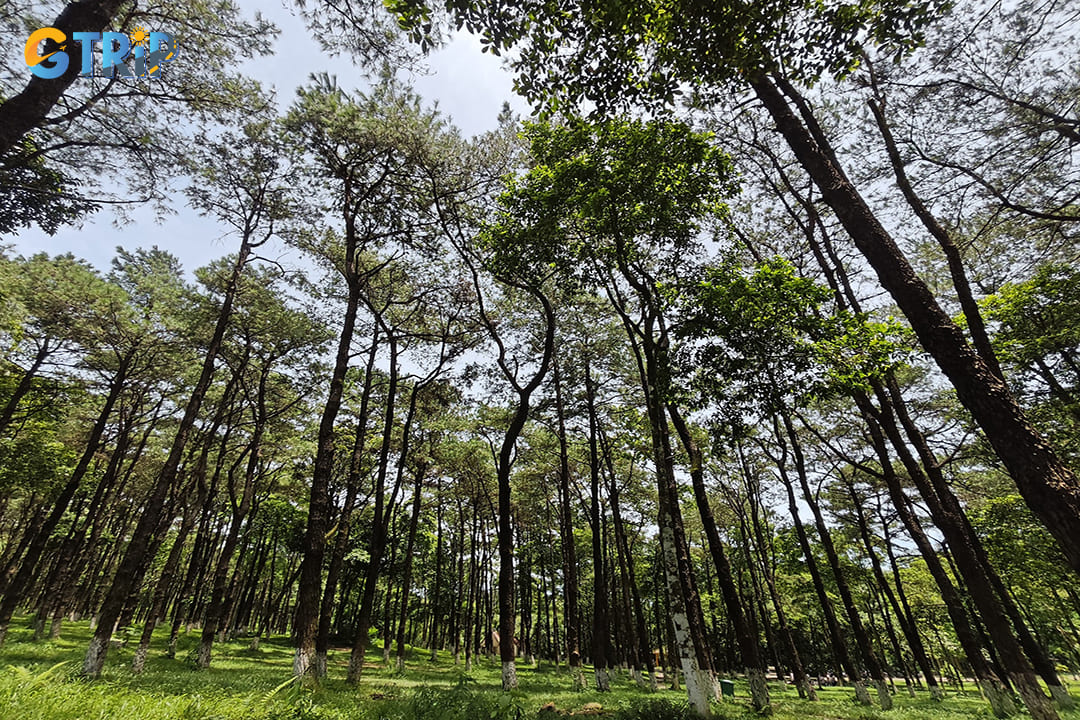
Ba Vi's forest structure is classified into three distinct ecological zones based on elevation and climate conditions
Unique flora and fauna
The conservation significance of Ba Vi National Park becomes particularly evident when examining its rare plant species. An impressive 64 plant species found within the park are listed in Vietnam's Red Book of rare and endangered species, representing a significant percentage of the country's documented threatened flora. This high concentration of vulnerable plants makes Ba Vi critically important for botanical conservation efforts nationwide.
Among the park's most treasured plant species is the Bach Xanh (Calocedrus macrolepis). It is a conifer species with distinctive flattened sprays of scale-like leaves that has become increasingly rare throughout its native range. Tourists to the park can also marvel at numerous centenary trees, living monuments that have witnessed centuries of history. Some of these ancient botanical sentinels reach staggering heights and girths, with certain specimens estimated to be 500-700 years old.
The animal conservation story of Ba Vi includes several endangered species that find refuge within its protected boundaries. Although Delacour's langur, a critically endangered primate, was historically noted in the region, today these rare monkeys are primarily found in other protected areas of northern Vietnam. Conservation experts continue to monitor for potential remaining populations or signs of return to the park.
The Owston's Civet, a small carnivorous mammal with distinctive white stripes and spots, represents another of Ba Vi's endangered residents. This nocturnal species faces severe threats from hunting and habitat loss throughout its limited range, making protected areas like Ba Vi crucial for its survival.
Ba Vi National Park also serves as a living pharmacy, with an extraordinary 896 documented medicinal plant species growing within its boundaries. This botanical wealth has long been recognized by traditional Vietnamese medicine practitioners, who have utilized these plants for treating ailments ranging from digestive disorders to respiratory conditions. Modern pharmaceutical research continues to investigate these plants for potential new medicines, highlighting the park's value beyond its scenic beauty.
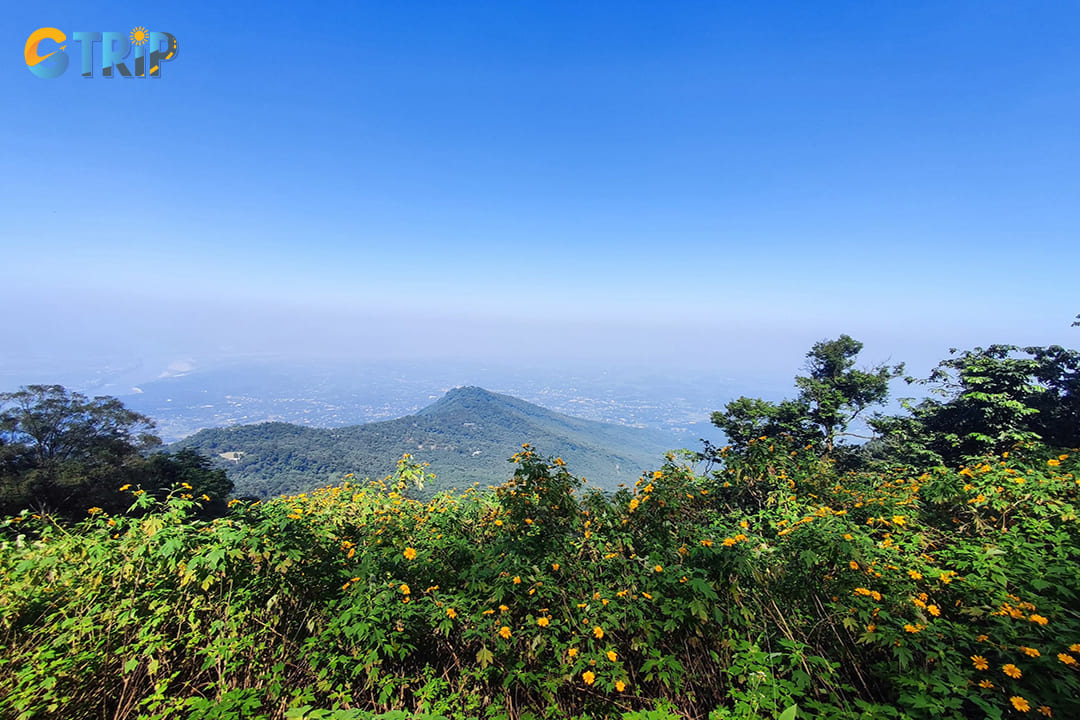
The conservation significance of Ba Vi National Park becomes particularly evident when examining its rare plant species
Things to do in Ba Vi National Park
Ba Vi National Park offers a diverse range of activities for nature lovers, adventure seekers, and cultural enthusiasts alike. Here's a comprehensive guide to the best activities you can enjoy in this magnificent natural sanctuary.
Trek to Ba Vi's three mountain peaks
Ba Vi National Park is famous for its three majestic peaks: Dinh Vua (King's Peak) at 1,296m, Tan Vien at 1,226m, and Ngoc Hoa at 1,131m. Each summit offers a unique trekking experience with varying difficulty levels.
The trek to Dinh Vua, the highest peak, takes approximately 2-3 hours, depending on your fitness level. The trail winds through dense forests with occasional clearings that provide breathtaking panoramic views of the surrounding landscape. On clear days, you can see Hanoi in the distance and the Red River snaking through the countryside.
For less experienced hikers, Ngoc Hoa peak offers a more accessible trail with convenient stone steps along most of the route. Tan Vien peak is particularly popular among locals due to its cultural significance in Vietnamese folklore as the home of the Mountain God.
Trekking tips for Ba Vi peaks:
- Start early in the morning to avoid afternoon heat and fog
- Wear proper hiking shoes with good grip
- Bring at least 1.5 liters of water per person
- Pack light snacks for energy
- Carry a light raincoat as weather can change quickly
- Use trekking poles for the steeper sections

Each summit of Ba Vi offers a unique trekking experience with varying difficulty levels
Explore the ancient French church ruins
Nestled at an elevation of approximately 800 meters, the French church ruins stand as a haunting reminder of the colonial era. Built in the early 20th century as a retreat for French officers, this Gothic-style church has been largely reclaimed by nature, creating a mystical atmosphere.
The moss-covered stone walls and arched windows frame spectacular views of the mountains and valleys below. The church's location makes it an ideal spot to rest during your mountain trek or as a destination in itself. Many tourists find the juxtaposition of European architecture against the Vietnamese mountain landscape particularly striking.
As you explore the ruins, you'll notice how the jungle vegetation has intertwined with the stone structure, creating a scene straight out of an adventure movie. Early morning visits offer the best lighting conditions as sunbeams filter through the mist and abandoned windows, creating an ethereal atmosphere.
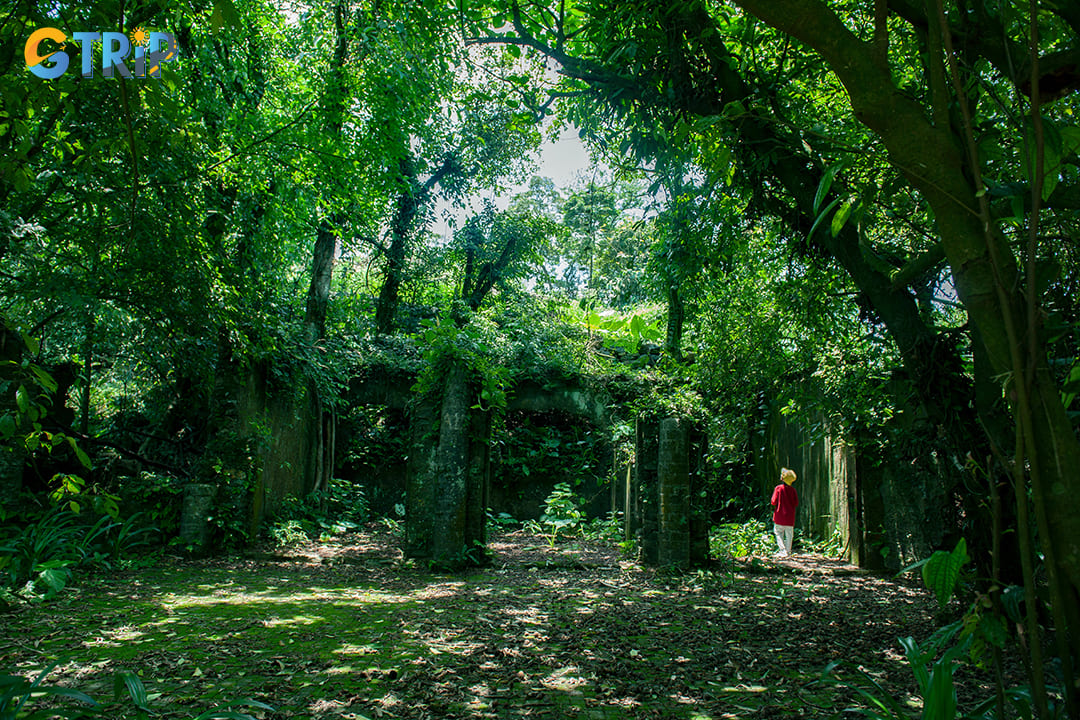
The French church ruins create a mystical atmosphere that photographers and history enthusiasts adore
Visit the Upper Temple (Den Thuong)
Den Thuong, or the Upper Temple, sits majestically at the summit of Tan Vien Peak at 1,226 meters above sea level. This sacred site is dedicated to the Mountain God (Tan Vien), one of the four immortals in Vietnamese folk religion.
The temple complex features traditional Vietnamese architectural elements with curved roofs, intricate wooden carvings, and vibrant red and gold decorations. After climbing the 1,000+ stone steps to reach this spiritual sanctuary, you are rewarded with cultural immersion and breathtaking panoramic views of the surrounding mountains and valleys.
During special festivals, particularly in the first and third lunar months, Den Thuong becomes a bustling pilgrimage site where locals come to pray for good fortune, health, and prosperity. The incense-filled air and rhythmic chanting create a powerful spiritual atmosphere that offers a genuine glimpse into Vietnamese religious traditions.
Visit Uncle Ho Temple
The Uncle Ho Temple (Den Tho Chu Tich Ho Chi Minh) stands as a reverent homage to Vietnam's beloved leader. Located at about 1,100 meters above sea level, this elegant monument combines traditional Vietnamese architectural elements with modern touches.
Inside the temple, you can find exhibits chronicling Ho Chi Minh's life, his revolutionary activities, and his contributions to Vietnamese independence. The serene atmosphere encourages quiet reflection, with many Vietnamese visitors coming to pay their respects to the founding father of modern Vietnam.
The temple complex is surrounded by beautifully maintained gardens featuring various plant species native to Ba Vi. The location offers spectacular views of the surrounding mountains, making it both a cultural and scenic highlight of any visit to the national park.
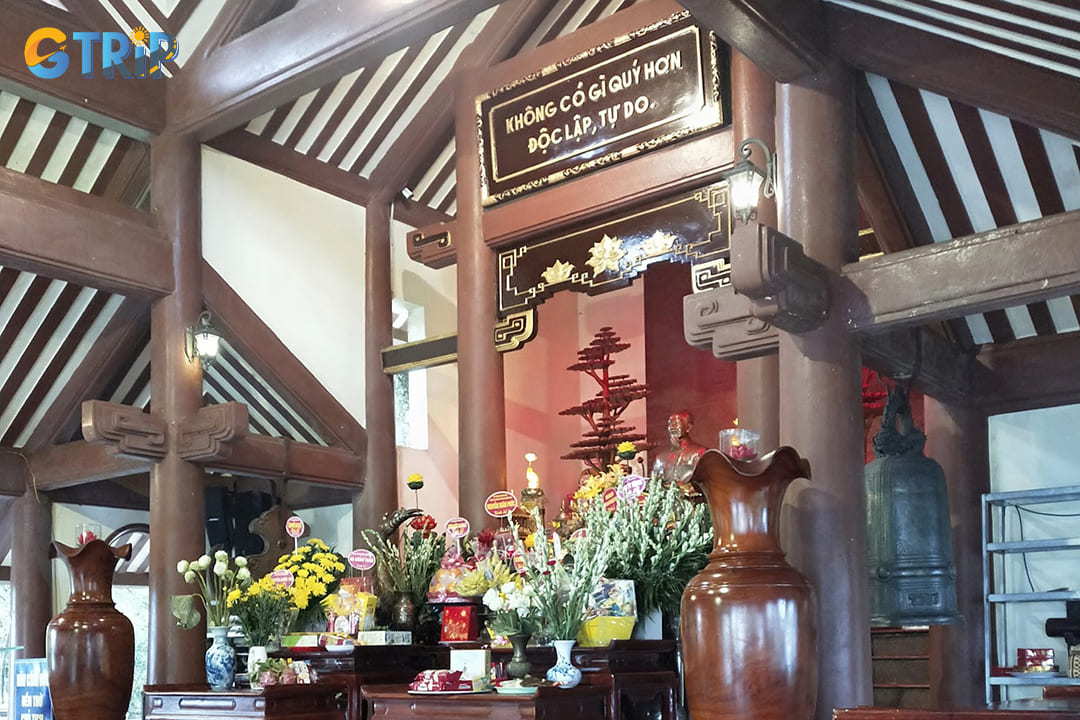
The Uncle Ho Temple (Den Tho Chu Tich Ho Chi Minh) stands as a reverent homage to Vietnam's beloved leader
Relaxing at Ao Vua Tourist Area
Located at the foot of Ba Vi Mountain, Ao Vua Tourist Area provides a refreshing retreat from the more strenuous activities in the park. This recreational zone centers around a picturesque lake surrounded by lush vegetation and comfortable facilities.
Ao Vua offers various water-based activities, including paddleboat rentals and swimming in designated areas. The crystal-clear mountain water maintains a pleasant temperature year-round, making it particularly refreshing during Vietnam's hot summer months. For those seeking relaxation, the area features:
- Traditional wooden stilt houses where you can rest and enjoy local meals
- Hammocks strung between trees for afternoon naps
- Massage services featuring local herbal treatments
- Quiet pavilions are perfect for reading or meditation
Many tourists choose to spend half a day at Ao Vua after their mountain trekking activities, using it as a rejuvenating finale to their Ba Vi adventure.
Wander through the Cactus Greenhouse
The Cactus Greenhouse in Ba Vi National Park houses an impressive collection of over 1,500 cactus and succulent species from around the world. This unexpected botanical treasure offers a stark contrast to the lush tropical vegetation found throughout the rest of the park.
Walking through the greenhouse, you'll encounter rare specimens ranging from tiny button cacti to towering saguaros and unusual varieties with colorful blooms. The greenhouse is organized by geographical regions, allowing you to understand how these resilient plants have adapted to different desert environments globally.
Photography enthusiasts will particularly appreciate the unique shapes, textures, and colors that make for striking compositions. The greenhouse also includes an educational section explaining the ecological importance of cacti and their traditional uses in different cultures for medicine, food, and tools.
Entertaining at Thien Son Suoi Nga
Thien Son Suoi Nga is an expansive recreation complex within Ba Vi National Park that spans three distinct areas.
Ha Son: Paddle on Ha Son Lake and relax in stilt houses
At Ha Son, the tranquil lake serves as the centerpiece for water-based activities. You can rent traditional wooden boats or modern paddleboats to explore the calm waters while enjoying views of the surrounding mountains. The authentic stilt houses built along the shoreline provide comfortable resting spots where you can enjoy local cuisine while dangling your feet over the water.
Trung Son: Hiking to reach Nga stream at Trung Son
The Trung Son area offers moderately challenging hiking trails that lead to the pristine Nga Stream. The path winds through dense bamboo forests and past impressive rock formations before revealing the crystal-clear waters of the stream. Along the route, several lookout points provide excellent opportunities for photography and wildlife spotting.
Ngoa Son: Swim in natural waterfalls and pools at Ngoa Son
Perhaps the most popular of the three areas, Ngoa Son features a series of natural waterfalls creating tiered pools perfect for swimming. The water, filtered through layers of mountain rock, remains remarkably clear and refreshing. Stone steps and pathways have been thoughtfully integrated into the natural landscape to provide safe access to different swimming areas suitable for various swimming abilities.
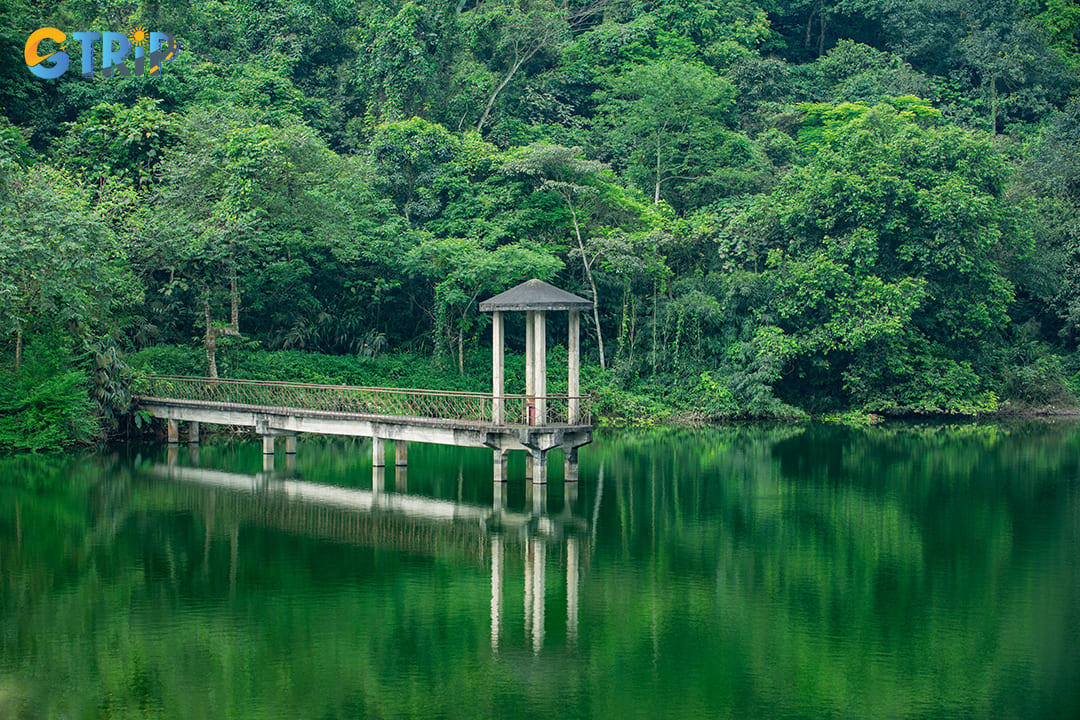
Beautiful scenery of forests, emerald green lake in Ecological Tourist Area Thien Son Suoi Nga
Cycle through the scenic mountain road of Ba Vi National Park
The winding roads of Ba Vi National Park offer an exhilarating experience for cycling enthusiasts. The main 12-kilometer route from the park entrance to the summit provides varying gradients and spectacular scenery, making it popular with both amateur and experienced cyclists.
As you pedal uphill, you'll pass through distinct vegetation zones, starting with tropical lowland forests and transitioning to pine forests at higher elevations. The changing landscape provides natural intervals for rest stops where you can catch your breath while admiring the views. Many tourists bring their bikes, but rental services are available near the park entrance. For safety, bring a helmet, gloves, and water bottles, and check your brakes before attempting the descent, as some sections can be quite steep.
Go bird watching and wildlife spotting
Ba Vi National Park is a biodiversity hotspot with over 1,200 plant species and numerous animal species, making it an excellent destination for wildlife enthusiasts. The park is home to over 100 bird species, including several rare and endangered varieties.
Early morning (5:00-7:00 AM) and late afternoon (4:00-6:00 PM) offer the best opportunities for bird watching when birds are most active. Bring binoculars and a field guide to identify species like the white-crested laughingthrush, red-whiskered bulbul, and, if you're lucky, the endangered Vietnamese pheasant.
Besides birds, patient wildlife spotters might encounter:
- Red-shanked douc langurs in the upper canopy
- Wild boars foraging in the underbrush
- Flying squirrels gliding between trees at dusk
- Various species of colorful butterflies
- Several reptile species including forest lizards
The park offers guided wildlife tours with experienced local rangers who know the best spots for animal sightings and can provide insights into the ecological significance of different species.
Camp and have a BBQ in the Ba Vi pine hills
The pine-covered hills of Ba Vi provide an idyllic setting for camping and outdoor barbecues. Several designated camping areas offer flat grounds with breathtaking views of either the sunrise or sunset, depending on their location on the mountain.
Camping in Ba Vi gives you the rare opportunity to experience the park's changing atmosphere from day to night. As darkness falls, the symphony of insects and nocturnal birds creates a natural soundscape that city dwellers rarely experience. On clear nights, the star-gazing opportunities are exceptional due to minimal light pollution.
For BBQ enthusiasts, several options are available:
- Bring your own equipment and supplies
- Rent BBQ facilities from authorized park vendors
- Book a full-service BBQ package that includes food, equipment, and setup
- Join community BBQ events organized during weekends (requires booking)
The pine-scented air adds a unique flavor to grilled foods, creating a memorable dining experience. Park rangers can provide guidance on fire safety and designated areas where cooking is permitted to protect the forest environment.
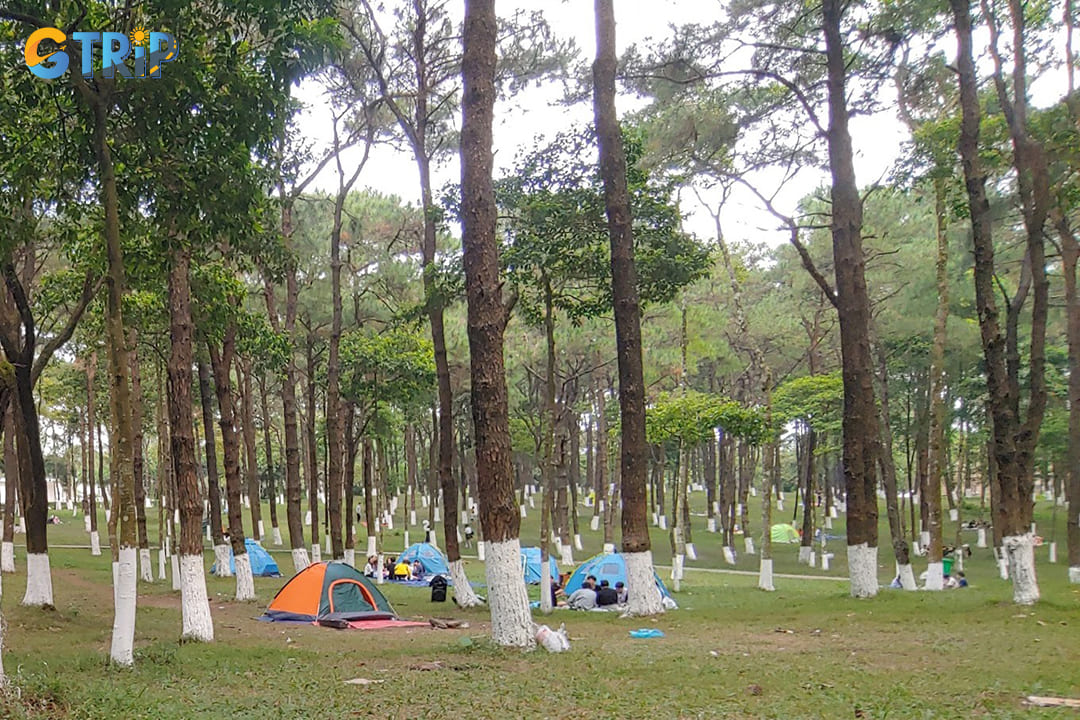
The pine-covered hills of Ba Vi provide an idyllic setting for camping and outdoor barbecues
Fees and opening hours of Ba Vi National Park
Planning your visit to Ba Vi National Park requires understanding the cost structure and timing to maximize your experience. The park offers different rates for various visitor categories and provides additional services that enhance your exploration of this natural paradise just outside Hanoi.
Fees
Ba Vi National Park offers affordable entry for all visitors, with a standard adult ticket priced at 60,000 VND (about $2.50). Discounts are available for seniors, people with disabilities, and students. University students pay 20,000 VND with ID, and school students only 10,000 VND. Pricing is the same for both domestic and international travelers.
Additional services include guided tours (300,000 VND/day for groups under 30), photography permits for professional shoots, and convenient parking. Bringing a valid ID is essential to access discounted rates.
Opening hours
Ba Vi National Park is open daily, with extended hours to suit different schedules. From Monday to Friday, it operates from 5:00 AM to 7:00 PM. On weekends, hours stretch from 4:00 AM to 8:00 PM to accommodate more visitors.
Early mornings (4:00 - 7:00 AM) are best for sunrise views and wildlife spotting, while mid-morning (8:00 - 10:00 AM) offers cooler hiking conditions. Late afternoons (4:00 - 6:00 PM) are ideal for catching sunset panoramas. Weekdays are generally quieter than weekends, making them great for a more peaceful experience.
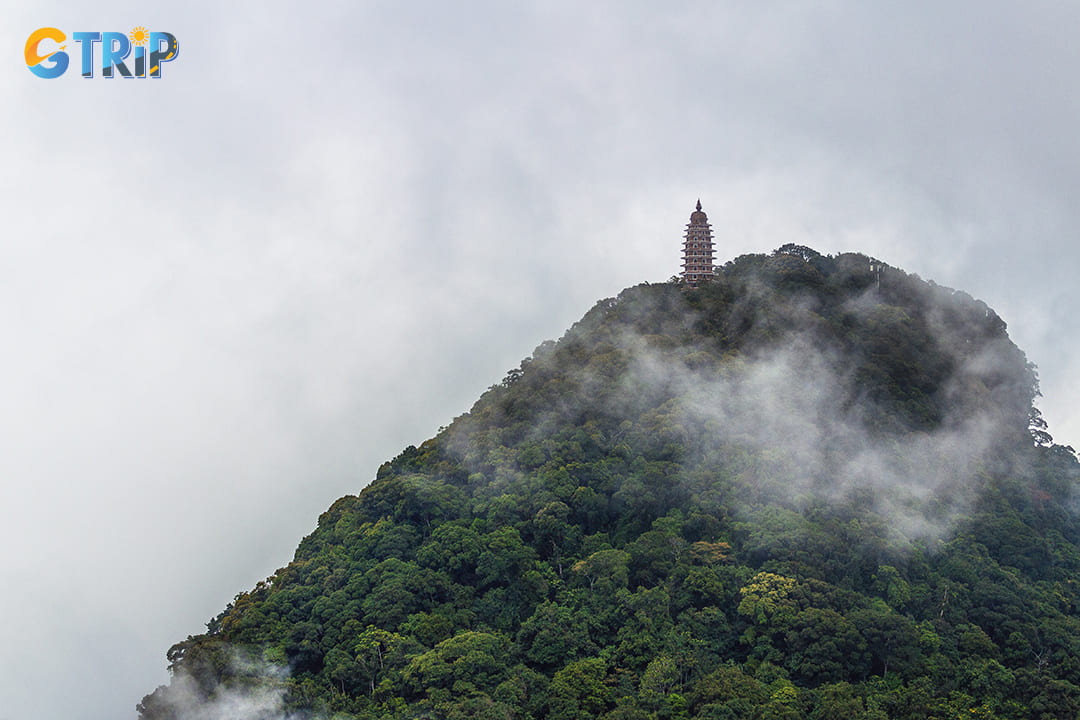
The park offers different rates for various visitor categories and provides additional services
Best time to visit Ba Vi National Park
Ba Vi National Park offers distinct experiences across the seasons, each with its own charm. Thanks to its mountainous terrain and microclimate, the park remains a refreshing retreat year-round, but the timing of your visit can greatly shape what you'll see and do.
Dry season (April to September)
This is the most popular period for outdoor activities, especially hiking. Clear skies, low humidity, and average temperatures around 23°C create ideal conditions for trekking to the peaks or exploring forest trails. June and July are warmer, with highs around 28.6°C, but Ba Vi's elevation keeps it cooler than Hanoi. Early mornings are especially beautiful, with crisp air and excellent visibility across the Red River Delta.
Wild sunflower season (November to December)
Ba Vi transforms into a golden landscape as wild sunflowers bloom across hillsides and meadows. This natural event draws photographers and nature lovers alike. Temperatures during this time are pleasantly cool (15°C - 22°C), making it perfect for walking and sightseeing. The best spots for flower viewing include the road to Tan Vien Peak, pine forests, and areas near the old French ruins.
Misty season (December to February)
Winter brings a quieter, more mystical atmosphere to the park. Morning fog covers the mountains, creating a dreamy, ethereal landscape. With temperatures ranging from 10.8°C to 15.8°C, it’s the coolest time of year. Though hiking becomes more challenging, this season is ideal for tranquil walks, photography, and temple visits. The spiritual aura of the mountain shrines is heightened by the surrounding mist and silence.
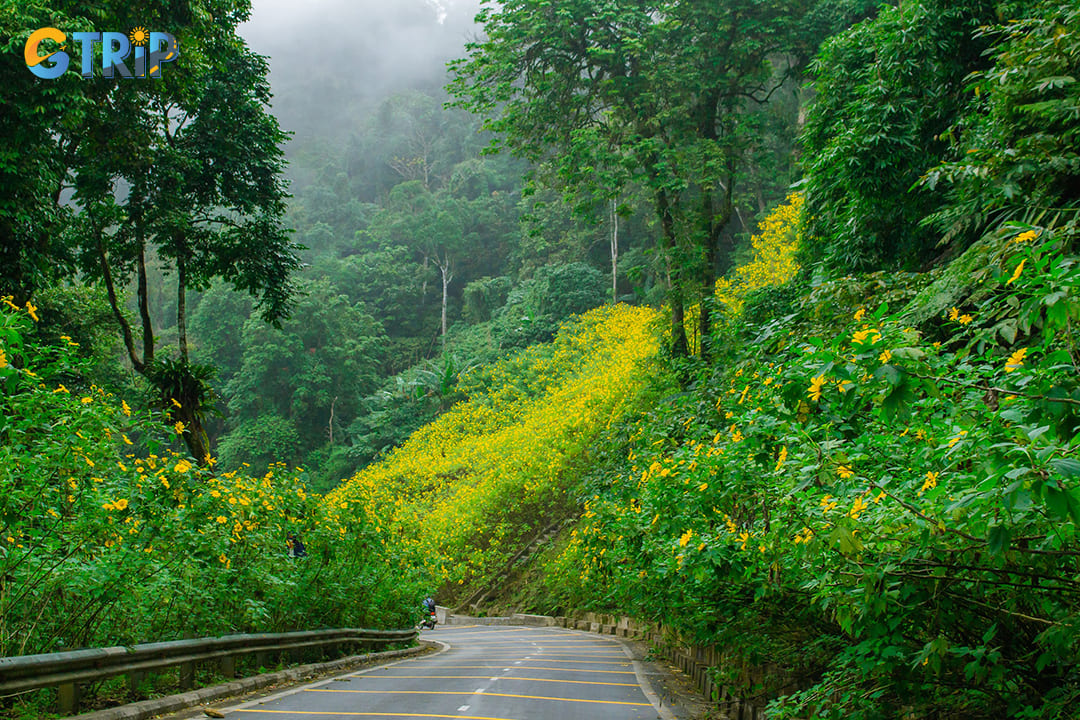
Ba Vi transforms into a golden landscape as wild sunflowers bloom across hillsides and meadows
How to get to Ba Vi National Park?
Ba Vi National Park lies about 48 to 60 kilometers west of Hanoi, offering a refreshing getaway into nature. Depending on your mode of transportation and traffic, the journey typically takes between 1.5 to 2 hours.
By bus
Taking the bus is the most economical way to reach the park. From Hanoi, board bus 71 at My Dinh Bus Station to Son Tay, then transfer to bus 214, which goes directly to Ba Vi National Park. The full journey takes about 2 to 2.5 hours and costs less than 40,000 VND in total. Alternatively, bus 214B from Yen Nghia Bus Station offers a direct route, though with fewer daily departures. This option is ideal for budget-conscious travelers, but buses can get crowded on weekends and public holidays.
By taxi or ride-hailing services
For convenience and comfort, traditional taxis or apps like Grab can take you directly from your hotel in Hanoi to the park entrance. The trip usually lasts around 1.5 hours and costs between 500,000 to 800,000 VND (20 - 35 USD) one way, depending on your starting point and traffic. This option offers air-conditioned travel, flexibility for rest stops, and no need to transfer. Booking a round trip or negotiating a wait-and-return fare with the same driver is often more economical and avoids the challenge of finding a ride back, especially during quiet times.
By motorbike rental
For travelers seeking adventure and independence, renting a motorbike provides a scenic and flexible route to Ba Vi. Rentals are available throughout Hanoi for 100,000 to 200,000 VND/day (4 -9 USD), including automatic scooters suitable for most riders. From Hanoi, follow Highway 32 west through Son Tay, then take well-marked local roads toward the park. The route covers 50 to 60 kilometers and offers beautiful countryside views.
Be sure to:
- Wear a helmet (mandatory by law)
- Check the bike's condition before departure
- Download offline maps in case of poor reception
- Bring extra fuel and water for the trip
- Avoid riding in rain or foggy weather, as roads can be slippery
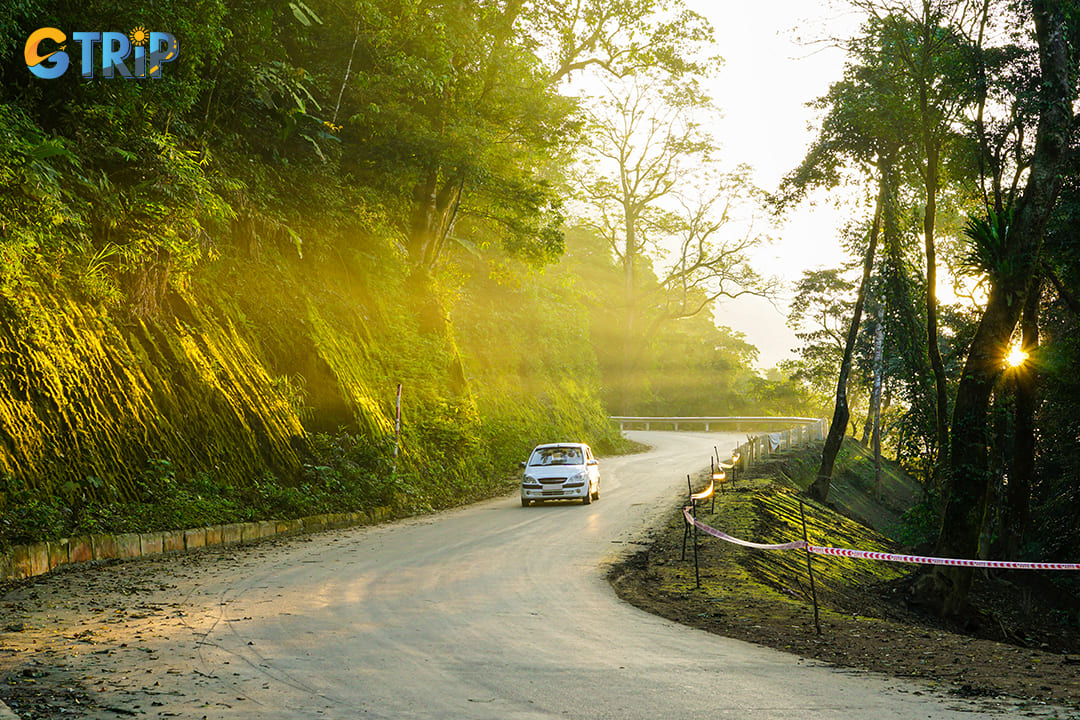
For convenience and comfort, traditional taxis or apps like Grab can take you directly from your hotel in Hanoi to the park entrance
What to eat when visiting Ba Vi National Park
A visit to Ba Vi National Park isn’t just about nature, it’s also a chance to experience the region’s distinctive mountain cuisine. Influenced by the cool climate, fertile soil, and traditional farming practices, the local food scene is rich in flavor, freshness, and cultural authenticity.
Grilled hill chicken
One of Ba Vi’s most iconic dishes, hill chicken, comes from free-range birds that roam forested areas and feed on wild herbs and insects. This natural diet gives the meat a firm texture and deep flavor.
- Preparation: Typically marinated with lemongrass, honey, ginger, and mountain herbs, then slowly grilled over charcoal for a smoky, tender finish.
- Where to try: Local favorites like Ga Doi restaurant and Quan An Son Thuy near the park entrance serve some of the best versions.
- What to pair with: Sticky rice (xôi) and forest herbs.
Stream fish
The clean mountain streams running through Ba Vi are home to fish like tilapia, carp, and snakehead. These are caught daily and cooked using simple, time-honored techniques.
Popular dishes:
- Grilled fish: With salt, pepper, and herbs.
- Fried fish: Crispy and served with chili-lime dipping sauce.
- Steamed fish: Delicately flavored with ginger and spring onions.
Buffalo meat
A traditional mountain delicacy, buffalo meat is rich in protein and prized for its bold flavor.
- Specialties include:
- Trau gac bep: Smoked-dried meat hung above kitchen fires.
- Trau nuong: Grilled with galangal and chili.
- Lau trau: Buffalo hot pot with local greens.
- Top spots: Quan Thit Trau Ba Vi and Lau Trau Son Tinh.
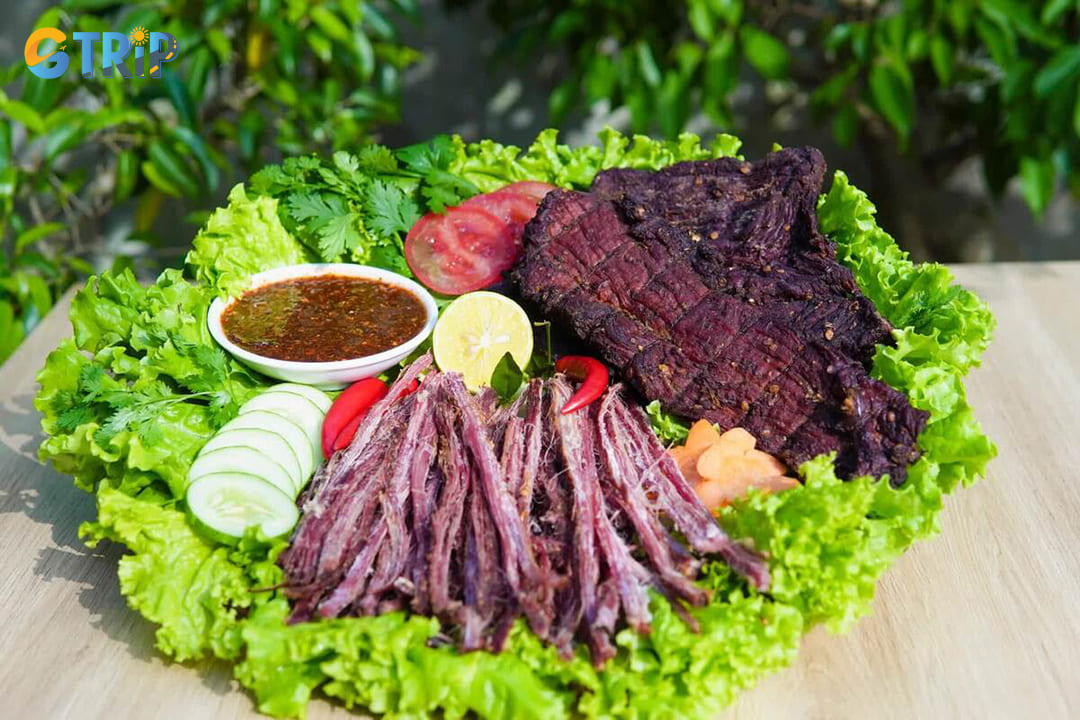
A traditional mountain delicacy, buffalo meat is rich in protein and prized for its bold flavor
Ba Vi fresh dairy products
Ba Vi is surprisingly home to Vietnam's dairy industry, established during the French colonial period when the mountain climate was found suitable for raising dairy cattle.
The Ba Vi Milk Factory produces exceptional dairy products worth trying:
- Fresh milk with distinctive grassy notes from mountain-raised cows
- Yogurt with a tangy, creamy texture
- Local cheese varieties developed with French influence
- Milk candies and caramels (keo sua) - perfect souvenirs to bring home
Several dairy-focused cafes near the park entrance offer fresh milk tea, yogurt smoothies, and milk-based desserts. The most famous is Sua Ba Vi Cafe, where you can sample the complete range of local dairy specialties while enjoying mountain views.
Forest vegetables
Ba Vi’s biodiverse forests provide a variety of wild vegetables, which are both nutritious and full of unique flavors.
- Rau sang: Slightly bitter, great stir-fried with garlic.
- Mang rung: Wild bamboo shoots used in soups or sautéed dishes.
- Nam rung: Seasonal mushrooms harvested after rain.
- La lom & rau don: Aromatic leaves and fiddlehead ferns found in many local stir-fries.
These foraged greens are staples at most eateries near the park and are usually cooked fresh each day.
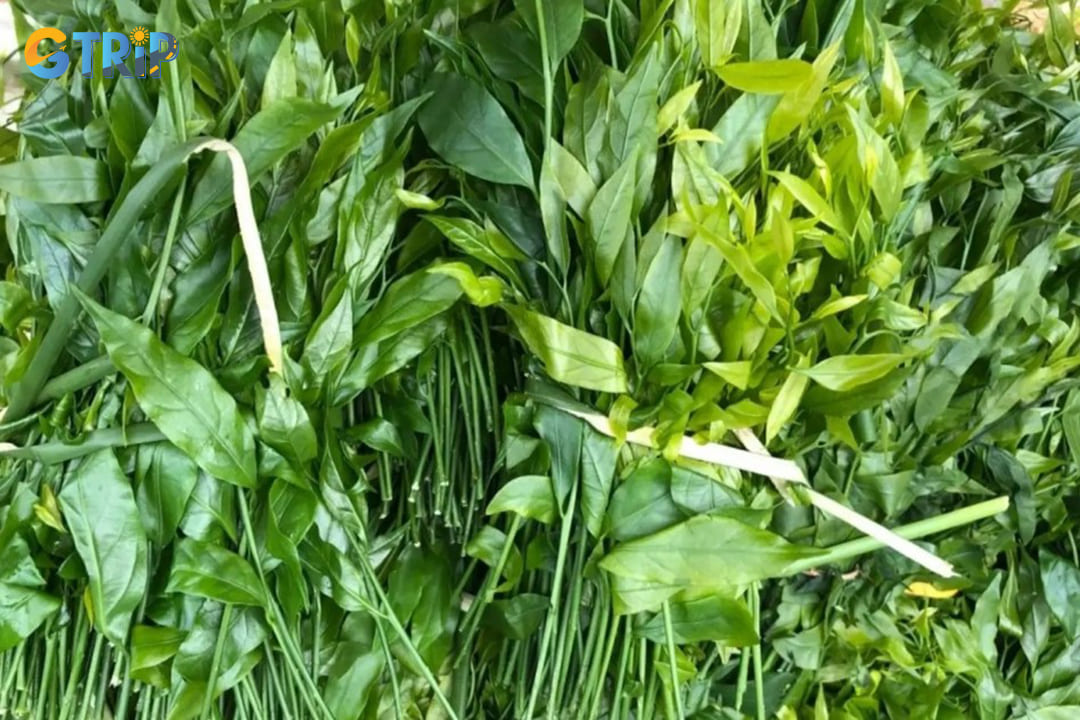
Ba Vi’s biodiverse forests provide a variety of wild vegetables, which are both nutritious and full of unique flavors
Where to stay when visiting Ba Vi National Park
Ba Vi offers a range of accommodation options, from luxury resorts with mountain views to rustic homestays and scenic campsites. Each stay gives you a unique way to enjoy the park’s natural beauty.
Luxury & resort stays
If comfort and scenery are your priorities, Ba Vi’s top resorts deliver both.
- Melia Ba Vi Mountain Retreat
Nestled within the park, this 4.5-star resort offers panoramic views of the Ba Vi mountains. Amenities include an infinity pool, spa services, and fine dining options. It's an ideal choice for those seeking comfort amidst nature.
- Amour Resort Bavi
Located near the park, this 3.5-star resort features garden-view rooms with balconies. Guests can enjoy a free buffet breakfast and explore the nearby natural attractions. Prices range from $100 to $300 per night, depending on the property and season.
Mid-range & homestays
Great for cultural immersion and local experiences.
- Bavi Annam Garden
Situated in Ba Vi, this accommodation offers free bikes, an outdoor swimming pool, and a garden. Guests have praised its atmosphere and helpful staff.
- SunnyHome Homestay and Retreat
A warm, locally-run retreat offering comfortable rooms and home-cooked meals, surrounded by greenery. Expect to pay $30 to $80 per night, depending on the level of comfort.
Budget-friendly stays
For nature lovers and backpackers.
- Bavi Homestead: A rustic option offering basic comforts and a chance to connect with the local lifestyle.
- Hotel Hai Au: A budget hotel with simple rooms, suitable for short stays close to the park.
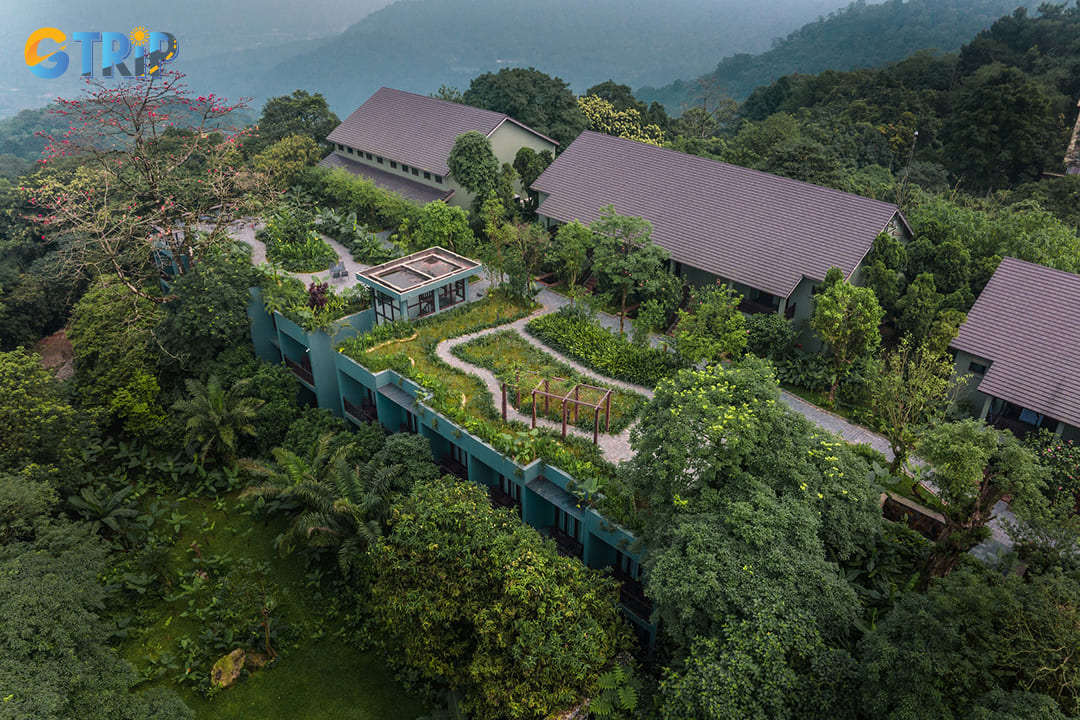
Ba Vi offers a range of accommodation options, from luxury resorts with mountain views to rustic homestays and scenic campsites
Travel tips for visiting Ba Vi National Park
Planning a trip to Ba Vi National Park requires some preparation to ensure you have a comfortable and memorable experience. These tips will help you make the most of your adventure in this natural wonderland just outside Hanoi.
- Wear proper gear: Hiking shoes, layered clothes, rain jacket
- Use protection: Insect repellent, sunscreen, long pants, hat
- Stay fueled: Bring 2L of water, snacks, optional picnic
- Start early: Arrive by 8–9 AM for clearer views
- Hire a guide: Available at the park entrance (~200,000 - 300,000 VND)
- Pack smart: Camera, tripod, batteries, waterproof bag
- Respect nature: No littering, stay on trails, dress modestly
- Time your visit: Plan 6 - 8 hours, avoid weekends, go on weekdays in October - November or March - April

Planning a trip to Ba Vi National Park requires some preparation to ensure you have a comfortable and memorable experience
Spending time in Ba Vi National Park is more than a quick getaway. It's a chance to immerse yourself in nature, recharge your spirit, and experience the cultural soul of northern Vietnam. With its cool mountain air, scenic trails, ancient temples, and farm-to-table cuisine, Ba Vi offers a peaceful retreat from Hanoi's fast pace. And when you're ready to explore more destinations like this or need help planning your journey, GTrip - Vietnam Travel Agency is here to help you travel further, deeper, and more meaningfully. Consider booking our tours to explore Ba Vi National Park and nearby attractions with the best support.

